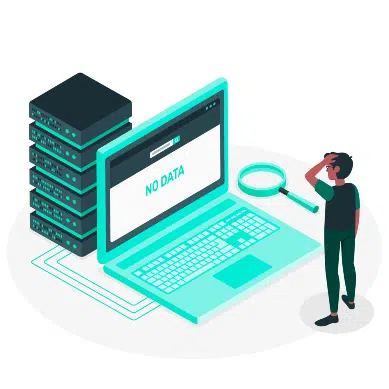The Third Digital Wave
The digital transformation of the last few decades has completely changed the way individuals and businesses interact. Top that with Covid 19 which has put the world on a fast track to the third wave of digitalization. Bob Swan, Intel CEO, shared the following message with customers and partners at the onset of the pandemic, “We are witnessing what will surely be remembered as a historic deployment of remote work and digital access to services across every domain.”
Indeed, customer-friendly apps replete with self-service options have proliferated since Covid 19. Groceries and pharmacies have turned to single and recurring online transactions as their primary business. Doctors have begun delivering remote medical services and manufacturers are seriously embracing plans for supply chains that run with limited human intervention otherwise known as “lights out mode”. And the list goes on.
Companies will need to ensure that their digital resources are on par with their industry to succeed in this new environment. Accelerating digital transformation through emerging technologies can be an opportunity to increase revenue growth.

Repercussions on Compliance
Ever since the onset of this remarkable digital transformation, organizations have felt the strong ripple effect of shifts in policy, legislation, and compliance requirements. Policymakers and regulators are not only releasing new regulatory requirements but are now also requiring that businesses ensure the continued effectiveness of their compliance processes.
Gone are the days when “compliant” was a passive description of something your organization just was. A compliant organization today must have a continuous process of updating for changing laws and regulations, identifying the areas in which those laws impact your organization, and monitoring compliance efforts.
As the third wave of digitization takes a foothold, technology is now a competitive necessity. Organizations that proactively embrace digitization will need to ride the wave to improved compliance and risk mitigation, and ultimately greater consumer satisfaction.
Teaching an Old Spreadsheet New Tricks
Ironically, many institutions still lean towards manual or spreadsheet-based compliance processes despite tremendous strides toward digitization. In a Wolters Kluwer survey conducted recently, eighty-seven percent of the respondents were still using manual processes or spreadsheets at least some of the time for their compliance management efforts. This includes maintaining lists of new and changing regulations, as well as collecting, analyzing, and reporting on required regulatory data. Ironically, in a separate question on the survey, participants claimed that manual processes were a prime obstacle in achieving an effective compliance management program.
As more financial institutions catch the digital wave, we’ll see more manual processes being replaced with automated workflows that provide real-time insight, vulnerability notifications, audit logs, and reporting workflows. Digitization, in addition to cutting time and reducing siloed tasks, frees up resources of otherwise time-strapped compliance teams. With much of the workload being managed by technology advances and artificial intelligence, security professionals can spend more effort in implementing a holistic risk-based compliance program, rather than just putting out fires with each additional regulated requirement.
Why Are Compliance Costs Rising?
The pressure on compliance teams today is unprecedented. The amount of data created and stored has grown exponentially and so have the number of platforms that process and use this data. As a result, meeting regulatory obligations for privacy laws and reporting has become increasingly complex and the cost of compliance has increased exponentially.
There is another point to consider Rising inflation, a slump in the global economy as a result of the Russia-Ukraine War, and widespread supply chain problems are all increasing costs of providing goods and services. These same factors, in some way, are affecting the environment as far as compliance is concerned, as well.
As compliance becomes an increasingly larger portion of every company’s operating budget. From the hiring of additional employees like compliance officers and more IT professionals to the purchase of vulnerability scanning software and other network security tools, how do you balance curtailing compliance expenses without decreasing oversight and protection?
Start Getting Value With
Centraleyes for Free
See for yourself how the Centraleyes platform exceeds anything an old GRC
system does and eliminates the need for manual processes and spreadsheets
to give you immediate value and run a full risk assessment in less than 30 days
Here are four tips that can help you manage the increasing costs of regulatory compliance.
How to Reduce the Cost of Compliance?
Invest in Technology
The single most effective thing companies can do to reduce compliance costs is an investment in software that will automate part of the process.
Navigating the overwhelming choices is akin to piecing together a complex puzzle without the picture that shows the final result. Organizations will have to involve multiple functions, processes, and technologies, and ensure that the technologies involved are well-controlled and don’t introduce unintended or new risks into the environment.
- Managing and reporting on compliance risk
- Reducing process inefficiencies and better managing time and resources
- Accurately handling and analyzing data and limiting human error
- Enabling a compliance team to turn from check-the-box compliance to value-added work
- Aligning business strategy and focusing on ROI
We’re seeing a great push for automated platforms in the market that help centralize various types of GRC programs. Working with a central database cuts out siloed tasks and makes compliance processes visible across the network.
Trickle Down Compliance
Eliminate the risk of having to make sudden changes by empowering managers to implement programs built on the company’s ethics.
A top-down approach, where senior management supports strong policies, creates a trickle-down effect on the company’s ethics, policies, and compliance that can’t be matched from the bottom up.
Maximizing efficiency is different for every organization, but always shares similar traits. Namely, collaboration should be at the forefront of organizational structure.
To assist with this, create clear roles within your team. Break down silos. Use technology to help teams collaborate within the organization. Cross-functional teams that communicate well can significantly reduce the cost of compliance.
Invest in Compliance Resources and Personnel.
The approach that is going to deliver the most ROI, is having the internal dedicated resources needed to understand your contractual requirements, regulatory requirements, and commitments to customers in protecting their data. Having the internal staff or outsourcing will provide the guidance and tools needed to ensure that your organization can go through an external or internal audit in a streamlined fashion.
Having a skilled internal or outsourced compliance officer can save you money in the long run. Having someone on board who understands the various costs of compliance and the challenges that are particular to ISO 27001 versus PCI, for example, is invaluable in terms of time and avoiding headaches.
Proactive Compliance
Preventive or proactive risk management strategies attempt to anticipate and avoid risks through effective internal controls. Reactive risk management practices respond to risk after a risk event occurs or is detected.
Let’s return to our list of top compliance spending. Technology tops the list. If implemented well, can be a preventive control. Interestingly, the next three biggest spending categories are all responses to risk, and reactive. The next preventive strategy doesn’t surface until you bump into training further down the line.
In proactive compliance, efforts should be viewed through a consumer-centric lens and positioned as a competitive advantage throughout the organization. Organizations must have a clear, measurable definition of their risk tolerance. Institutions should know where and what their risks are and take ownership of them across the organization.
Part of that preparation should include going above and beyond current regulations to help ensure the security of the data and privacy of your customers, employees, and intellectual property.
How Centraleyes Helps Your Organization Reduce the Costs of Compliance
It’s time for a modernized approach to compliance. With better visibility and embedded digital controls to automate documentation, you can cut through layers of security requirements, ensuring higher levels of compliance at a lower cost.
As managing compliance increases in complexity and organizations face a never-ending grind of supervisory mandates, financial institutions will have an even greater need to embrace technology that replaces manual reporting procedures. An automated approach to compliance efforts will provide the consistency, transparency, and security that regulators require and stakeholders demand.
Our automated portal is a fabulous tool to help consolidate multiple efforts and streamline your compliance process. The centralized dashboard simplifies compliance by aligning comparable controls across multiple employments.
Call us today to learn more about Centraleyes.
Start Getting Value With
Centraleyes for Free
See for yourself how the Centraleyes platform exceeds anything an old GRC
system does and eliminates the need for manual processes and spreadsheets
to give you immediate value and run a full risk assessment in less than 30 days





